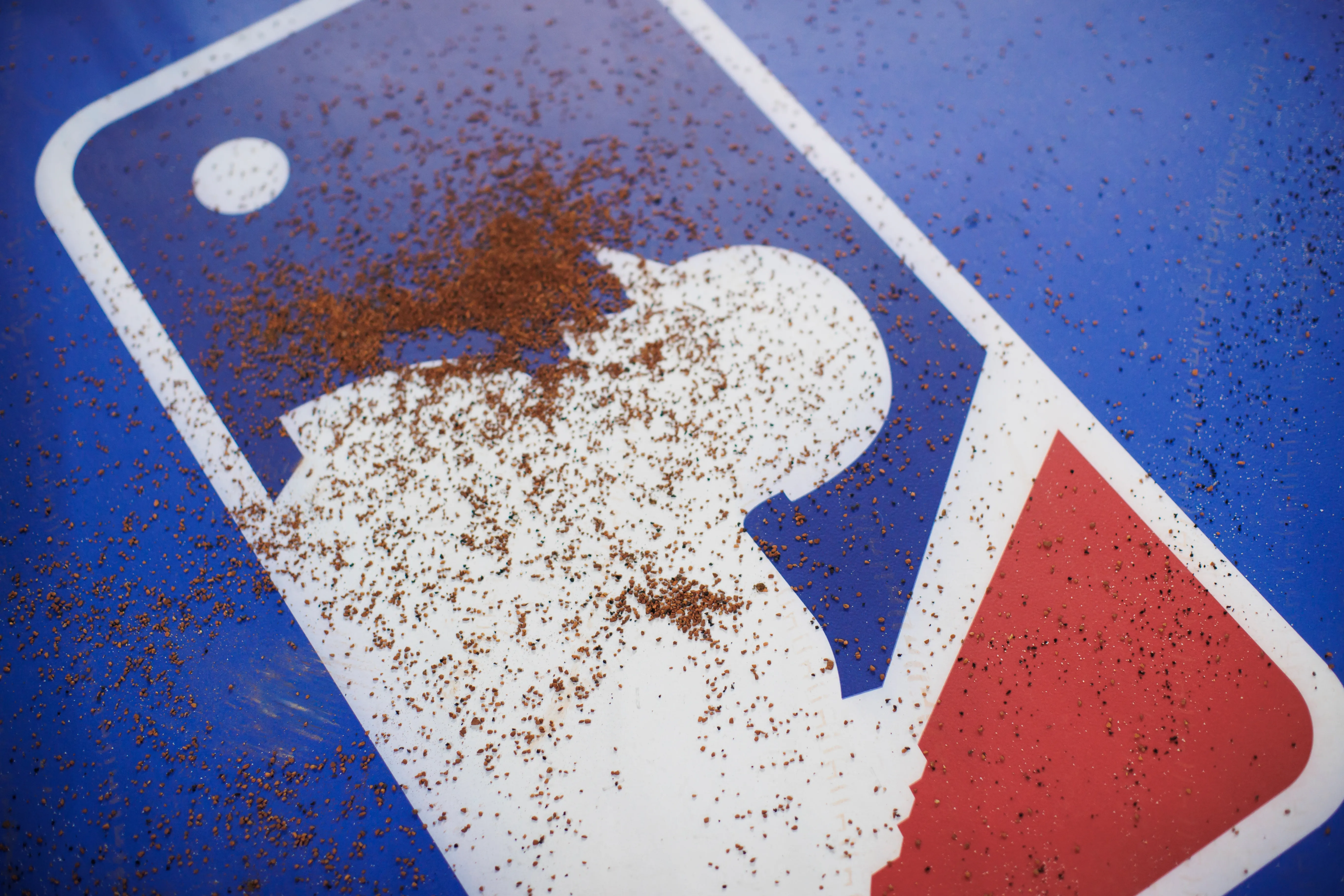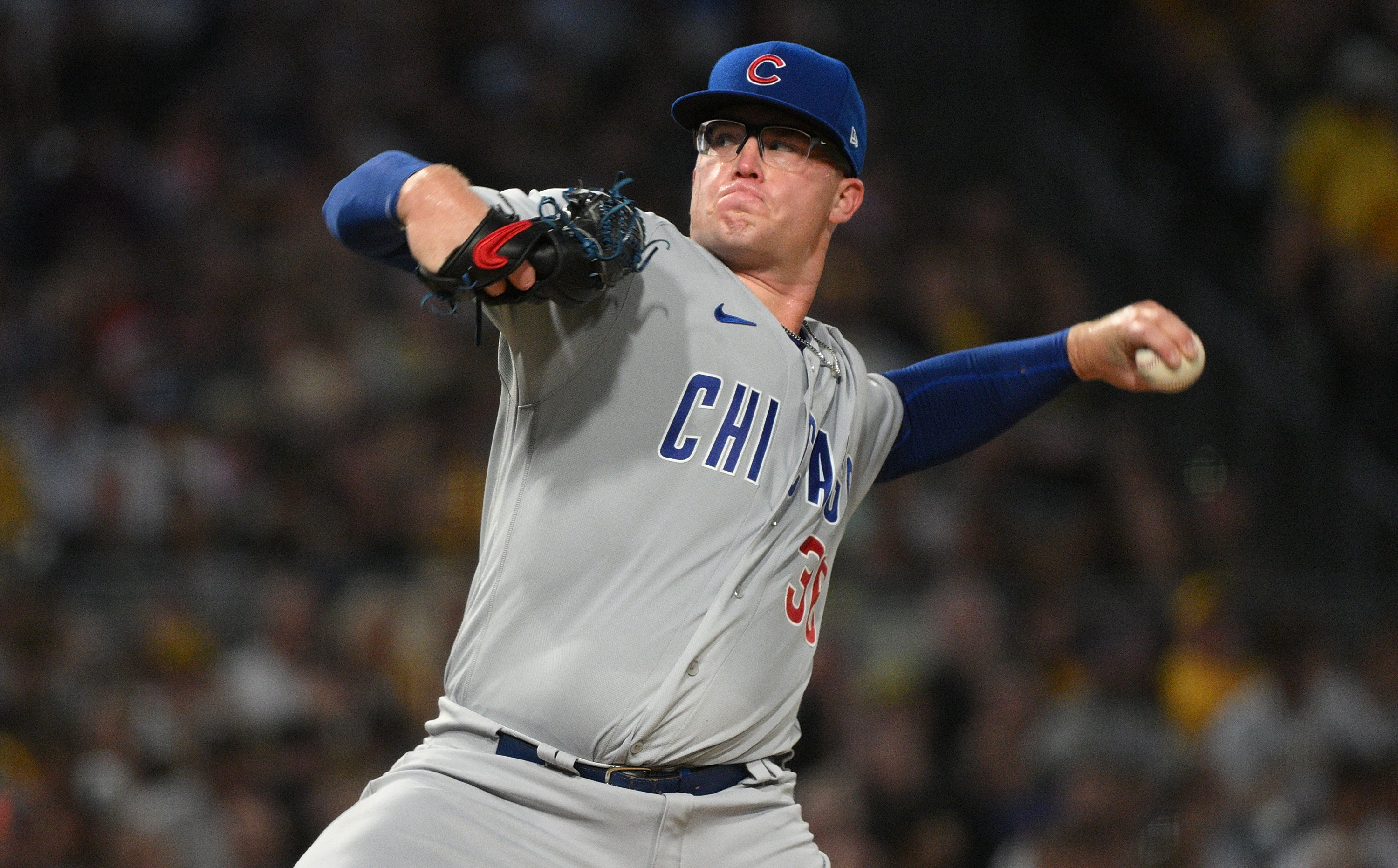Kyle Hendricks will have that same blank look on his face as 40,000 fans stand on their feet at Wrigley Field and the sea of people forms around Clark and Addison, waiting to explode in celebration when the Cubs win their first National League pennant in 71 years.
Hendricks is exhaustive in his preparation, creative with his variety of pitches and unpredictable sequencing and not at all intimidated by the idea of going up against Clayton Kershaw and the Los Angeles Dodgers on Saturday night in Game 6 of this best-of-seven NL Championship Series. Even Kershaw – a three-time Cy Young Award winner – recognizes Hendricks as “the Greg Maddux of this generation.”
Hendricks will stand on the mound as a billboard for The Cubs Way, a mixture of the patience, natural talent, Ivy League intelligence and guts needed to reimagine this franchise and get to the brink of the World Series. It also took some luck, the kind of random bounce or happy accident you don’t automatically associate with the Cubbies.
What if the initial Ryan Dempster deal with the Atlanta Braves didn’t fall through and the Cubs wound up with an underwhelming reliever like Randall Delgado? What if the Dodgers – the team Dempster desperately wanted to join so he could play with Ted Lilly again – changed their minds at the last minute?
“It was bizarre,” general manager Jed Hoyer admitted. “I’ve never been a part of something like that.”
Just think about how much Wrigleyville has changed since July 31, 2012. The Cubs were in the middle of a 101-loss season that would be rewarded with the No. 2 overall pick in the next year’s draft, which became potential MVP Kris Bryant, a tanking strategy that helped create a 103-win team.
As the clock ticked down toward the trade deadline, Dempster hung out inside the team’s offices, playing Golden Tee in the lounge, kicking his feet up on a staffer’s desk and watching the coverage on MLB Network.
MLB
“He was quite comfortable,” Hoyer said. “Listen, (players with) full no-trades or 10/5 rights – they have power. And I think Ryan is very thoughtful and had very specific desires and the Dodgers are obviously a destination. But I think he understood by the end that we had an obligation to the Cubs to make the best trade we could. And we couldn’t make a trade we liked with the Dodgers.”
The pitching infrastructure that would eventually help Hendricks win 16 games and an ERA title this season first built up value for Dempster, who posted a 2.25 ERA in his first 16 starts in 2012, the final year of his contract. The Cubs had been focused on a group that included three pitching prospects – Allen Webster, Zach Lee and Chris Reed – who are no longer in the Los Angeles organization.
“Listen, nobody knew how it would turn out,” Dempster said. “That’s the truth. No matter what trade you make with anybody, you don’t know how the trade’s going to turn out.”
President of baseball operations Theo Epstein understood all the risks and all the rewards, flipping one short-term asset after another and trying to collect as many potential building blocks as possible. During the Jeff Samardzija negotiations, the Cubs asked for Corey Seager so many times that it became a running joke with the Dodgers. The Cubs found another future All-Star shortstop in Addison Russell when they shipped Samardzija to the Oakland A’s in a blockbuster Fourth of July deal in 2014.
Dempster had been so fixated on the Dodgers that Cubs management finally told him: Fine, you don’t believe us? Talk to Ned Colletti yourself. Dempster spoke directly with Colletti, the Dodgers GM at the time and a former Cubs PR guy.
“I was like: ‘Wow, this really isn’t going to happen,’” Dempster remembered. “‘OK, so where do we go from here?’”
Like Rick Renteria, Colletti ultimately became part of the collateral damage when Andrew Friedman left the Tampa Bay Rays for a president’s job with the Dodgers in October 2014. That triggered the escape clause in Joe Maddon’s contract, allowing the star manager to score a five-year, $25 million contract in Chicago, while Colletti got bumped into an advisory role in Los Angeles.
“We got some criticism for this, but (Dempster) couldn’t actually hear the (other) conversations,” Hoyer said. “It wasn’t like he was forcing the negotiations. He was just there (in the office), so that way we could ask him any questions that we would have, like: ‘Will you do this? Will you do that?’ It wasn’t like we were having him on speaker.”
The Cubs also had a source with connections to the Texas Rangers who recommended a Class-A pitcher with a fluid delivery, pinpoint control and that Dartmouth College education.
“Theo would pop his head in,” Dempster recalled. “He would be like: ‘St. Louis?’ And I’d say: ‘No.’
“‘Yankees?’ ‘Do I have to shave my beard?’ ‘Yeah.’ ‘Then, no.’ We were going back and forth. And then (Theo said): ‘Hey, we like this package from Texas. It gives us a couple good players.’
“I was like: ‘All right, let’s do it.’”
Whatever tension may have existed in the moment, Dempster earned his World Series ring with the 2013 Boston Red Sox, signed on with MLB Network and rejoined the organization as a special assistant in December 2014, or right around the time the Cubs pushed to close Jon Lester’s $155 million megadeal.
“I love the Cubs,” Dempster said. “To see one of the guys that you got traded for contributing so much to a place that you care so much about, man, every fifth day, I don’t miss (it). I don’t miss when he’s pitching. I don’t miss an inning.
“I’m locked in, because I totally enjoy it. I think it’s awesome to leave somewhere that you care so much about – and the guy that comes back as a piece is much better than you (and) has been such an integral part.”
The Cubs are up 3-2 in the NLCS again, which means the national media will bring up Bartman, etc. But the Cubs will give the ball to a pitcher with poise, the ability to think on his feet and way more stuff than he’s given credit for, even if he’s not Kershaw.
“This is still the same game,” Hendricks said. “You go out there and you’re making the same pitches. It’s the same lineup, same hitters. There’s just more going on outside. So all the attention – the added pressure coming from the outside – you don’t pay attention to it.
“It has nothing to do with the job that you have to do when you go out there.”


